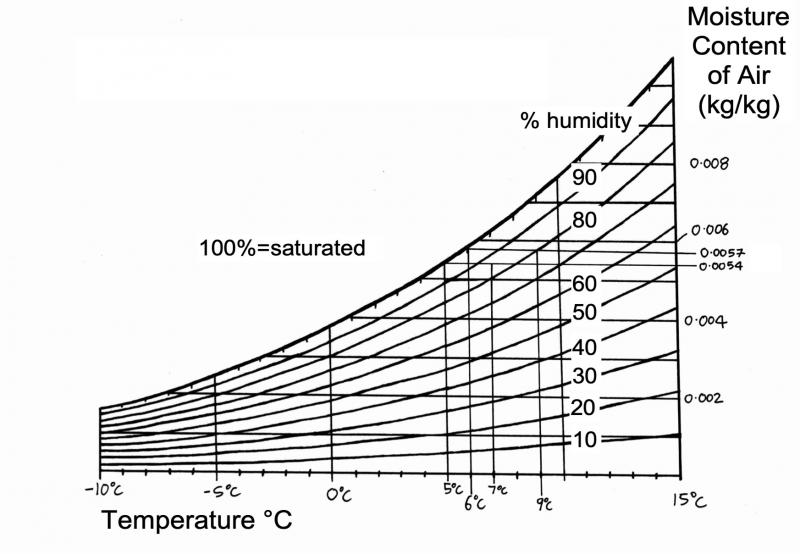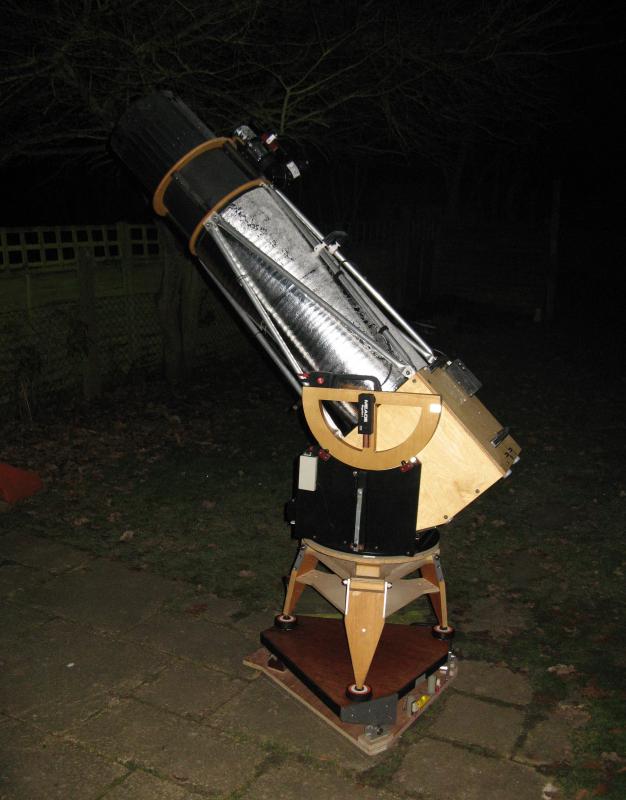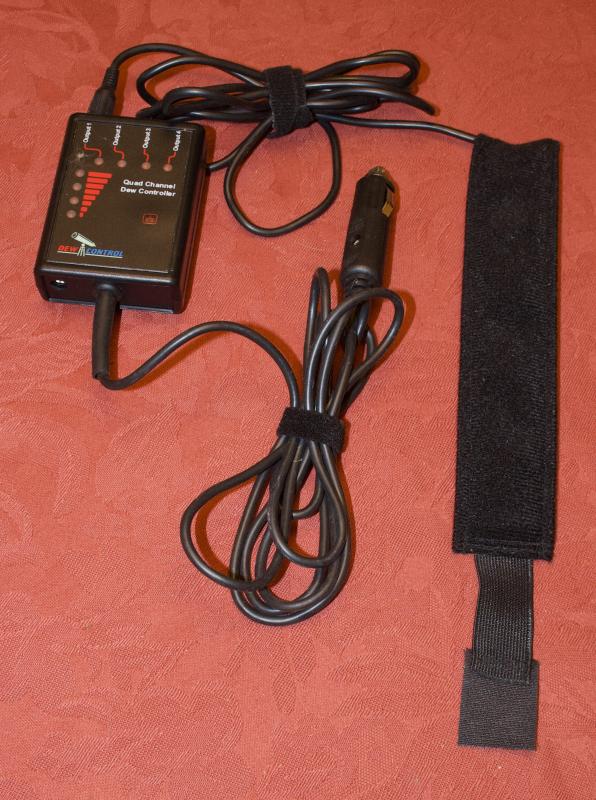2021 May 15
Dealing with dew
The problem of the formation of dew on astronomical equipment is one familiar to all observers in our famously damp islands. We seem to be constantly fighting condensation and spending money on methods of combatting it. It is at its worst, throughout the winter and spring, but it afflicts us to some extent in all seasons.
Physics of condensation
Dew formation results from the properties of the mixture of gases making up the air. Air cannot contain much water vapour. How much depends critically on the temperature.

But why is our equipment colder than the air? The answer is the radiative transfer of heat. A cloudless sky has a radiative temperature of –20 to –100°C. Objects facing the cold night sky will try to reach radiative equilibrium with it, and cool down as a result. In still air, objects can cool to several degrees below the air temperature. Dark and transparent objects cool faster (hence the term ‘black-body radiation’), while reflective objects such as polished metal or aluminised plastic cool more slowly.
Meteorology
In the UK, humidities of 50% or above, and temperatures between 5 and 15°C, are normal in the daytime. As the psychrometric chart shows, saturation occurs as this air falls to 0–5°C, which regularly occurs at night. Moreover, after a couple of hours under a clear sky, surfaces will commonly be 1–2°C cooler than the ambient air. Under these conditions, dewing is inevitable.
The worst conditions typically are encountered on nights of good transparency, after the passing of a cold front, when an absence of high water vapour makes the sky colder. If rain has occurred earlier in the day, then humidity close to the ground will be very high. If there is little wind then there is little warming conduction to surfaces, hence they cool faster. All these factors together often give rise to mist and fog, but heavy dewing will occur first.
Shielding

Durable dew shields are best made of aluminium or carbon fibre, but in an emergency, basic improvisation can do the trick. On an observing trip in Wales once, I was plagued with dew on my camera lens, but I found that by fitting it with a shield made from the hotel brochure and Sellotape, I could keep it off for long enough to take some photos.
While clarity of optics is our overriding concern, water on telescope tubes and mountings is not helpful to their long-term performance. Hence a major benefit of a domed observatory with a narrow slit: all the equipment, not just the objective, is largely shielded from the sky and kept above the dewing temperature. Short of this, benefits can be got by shielding the external surfaces of a telescope, or cladding a truss or skeleton-tube telescope with aluminium foil or reflective Mylar film.
Heating

Heater bands are manufactured in many different sizes. They have resistive heater wires enclosed in a fabric covering and are fed from a 12V DC supply. While you can connect them directly to a battery or mains power supply unit, it is better to limit the energy input to them with a dew heater controller, to give only the minimum heating necessary. Controllers simply act as timed switches, turning the current on and off periodically. You can experiment with them to find the minimum power setting that keeps dew at bay.
Dehumidifying
An interesting case was reported to me by a BAA member in Derbyshire. He was finding that the object glass of his 4-inch refractor, fitted with a dew shield, was regularly dewing on the inside. The telescope was stored in an unheated garage. I recommended that he place a small canister or bag of dry silica gel desiccant in the drawtube, to dehumidify the air inside. For this to work it would be necessary for the tube to be well-sealed. Cooled CCD and CMOS cameras often have desiccant containers inside them as well, else the cooling might cause condensation within the camera.
David Arditti, Director.
Equipment & Techniques Section
| The British Astronomical Association supports amateur astronomers around the UK and the rest of the world. Find out more about the BAA or join us. |
